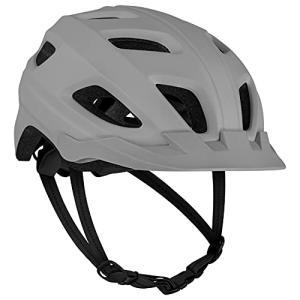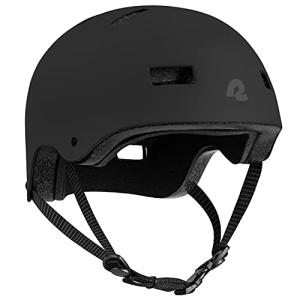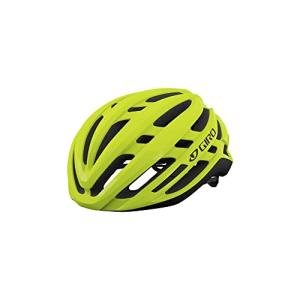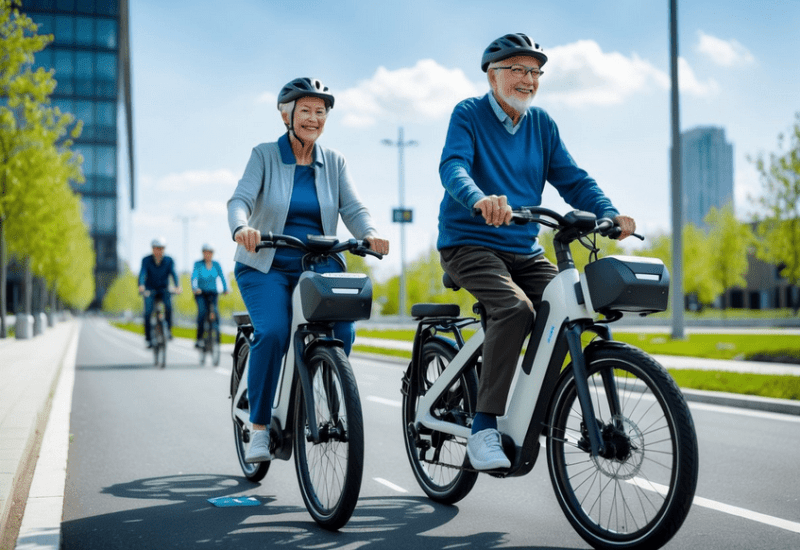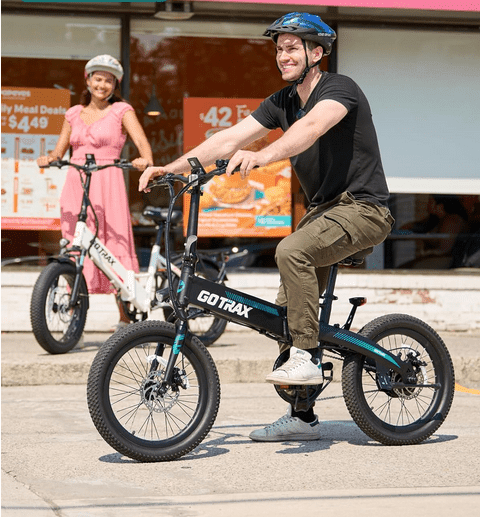How to Choose the Best Electric Mountain Bike for Beginners: A Comprehensive Guide
Venturing into the world of electric mountain bikes can be exciting yet challenging for beginners.
Selecting the right bike involves more than just picking a model that looks cool. Finding the perfect electric mountain bike means considering your budget, preferred riding style, and essential features that suit your needs.
These factors ensure a smooth entry into the world of electric biking and enhance your overall experience on trails or rough terrain.

Understanding the differences between models can help with making informed decisions.
Electric mountain bikes come equipped with varied features like frame material, battery range, and motor power.
Beginners should focus on bikes that offer a balance between quality and value, keeping their specific needs and how they plan to use the bike in mind.
For those new to this biking niche, it’s crucial to explore top brands known for reliability and innovation.
By doing so, beginners can ensure they're investing in a product that offers long-term satisfaction. With the right choice, beginners will find an enjoyable ride that not only matches but enhances their outdoor adventures.
Key Takeaways
- Budget and features guide choosing the right bike.
- Compare frame materials and motor power for better performance.
- Trusted brands offer quality and innovative solutions.
Understanding Electric Mountain Bikes
Electric mountain bikes, or eMTBs, combine traditional biking with electric power, giving the rider an extra boost on challenging terrain.
Types of Electric Mountain Bikes
Electric mountain bikes come in different styles, each suited for specific terrains and riding preferences.
Full-powered eMTBs are robust and ideal for intense off-road adventures, providing ample power and durability.
Lightweight eMTBs, on the other hand, offer a balance of agility and power, suitable for riders who enjoy both smooth trails and occasional rough paths.
Riders need to consider where and how they plan to ride when choosing between these types.
Another important classification is based on the level of assistance: pedal-assist or throttle-controlled eMTBs.
Pedal-assist bikes require the rider to pedal to receive motor assistance, offering a smooth experience, while throttle-controlled bikes provide power with a simple twist or push, similar to a scooter.
Key Components and Technologies
Key components of an eMTB include the frame, suspension, brakes, and wheels. These parts need to withstand the extra torque and speed that eMTBs can deliver.
E-mountain bikes often feature robust suspension systems to handle rugged terrains, usually incorporating front and rear suspension for smoother rides.
The braking system is crucial, with hydraulic disc brakes often being preferred for their powerful stopping capability.
Proper wheel size, typically ranging from 27.5 to 29 inches, plays a role in handling and speed.
Modern eMTBs also boast advanced tech, like integrated displays showing speed, distance, and battery life, enhancing the riding experience.
Electric Motor and Battery Essentials
The heart of any eMTB is its electric motor and battery.
Motors vary in power, typically between 250W to 750W, affecting speed and torque. Higher wattage generally offers more power, but can also result in heavier bikes.
Battery capacity, measured in watt-hours (Wh), determines how far a bike can travel on a single charge.
Most eMTBs use lithium-ion batteries, prized for their efficiency and longevity.
Important features include a removable battery, which eases charging and allows for quick swaps during long rides.
Common capacities range from 400Wh to 700Wh, impacting the eMTB's range and performance in demanding conditions.
Selecting the Right E-MTB for Your Riding Style

Choosing the right electric mountain bike (e-MTB) requires understanding your riding needs.
Whether you're exploring rugged terrain or cruising smoother trails, your riding style will guide your choice in bike features like suspension and geometry.
Assessing Your Riding Preferences
Before selecting an e-MTB, define your riding style and experience level.
Beginners might prefer smoother, beginner-friendly trails, while those with more experience could be drawn to challenging singletrack or even downhill (DH) adventures.
Identifying whether you like leisure rides or adrenaline-pumping trails will impact the bike choice.
Matching Bikes to Riding Conditions
Different riding conditions require various bike features.
For trail rides or mixed-use terrain, a versatile trail bike might be ideal, offering a balance of durability and agility.
If you enjoy high-speed descents or technical trails, an enduro bike is optimal for its robust construction and control.
For all-around mountain riding, an all-mountain bike offers flexibility across various conditions.
Importance of Suspension in E-MTBs
Suspension plays a crucial role in how an e-MTB handles different terrains.
Suspension travel determines how well the bike absorbs bumps and rough paths.
Beginners may benefit from moderate travel for comfort, while more adventurous riders might require extensive travel found in bikes like DH or enduro models.
An adjustable suspension system could offer flexibility for varied riding styles and terrains.
Performance Features and Innovations

Choosing the best electric mountain bike involves looking at key performance features and innovations.
Evaluating Motor Power and Torque
Motor power and torque play a big role in determining an e-bike's performance.
Many e-bikes, like those featuring the Shimano EP8 or EP801 motors, are designed with mountain biking in mind. These motors offer good power levels, making steep climbs easier.
Torque, measured in Newton-meters (Nm), is essential in how well the bike can handle challenging terrains.
Peak torque can range from 60Nm to 85Nm or higher, which helps in providing a confident ride on rough trails.
Eco mode and boost mode are common features in these motors. Eco mode conserves energy, making it suitable for longer rides, while boost mode offers maximum assistance for challenging segments.
Battery Range and Options
Battery size and range affect how far you can ride before needing a recharge.
Many entry-level eMTBs come with battery sizes from 500Wh to 700Wh.
More advanced models may offer up to a 900Wh battery, giving a longer range and more reliable performance.
A larger battery typically means a longer ride in powerful modes like boost mode. However, it adds weight to the bike, which might affect handling.
Rechargeable batteries allow for flexibility; ensuring a full charge before setting out can maximize efficiency.
Advanced Drivetrain Considerations
The drivetrain is another important feature impacting the bike's efficiency.
Many electric mountain bikes use systems from respected brands like Shimano, Yamaha, or TQ. These systems ensure smooth gear transitions and optimal power management.
A good drivetrain also contributes to managing the motor's power and torque effectively. This ensures a seamless riding experience when moving between different terrains.
Some drivetrains automatically adjust to optimize assist levels, providing an effortless ride.
Selecting the right drivetrain can make a noticeable difference in how the bike performs across varied terrains.
Quality and Durability of Build Materials

The choice of build materials significantly impacts the performance and lifetime of an electric mountain bike.
Comparing Frame Materials
Choosing the right frame material is crucial for quality and durability.
Carbon frames are known for being lightweight and strong. They offer excellent performance, but they are more expensive. They are ideal for riders who prioritize agility and ease of handling.
Aluminum frames are popular due to their balance of weight and cost. They are lightweight, making them suitable for beginners who need a manageable ride. These frames provide a sturdy option without the higher price of carbon, fitting many starter budgets.
Steel frames are known for their durability and can withstand significant stress. However, they are heavier, which might affect agility and handling. They are generally less expensive and could be a good fit for those prioritizing durability over weight.
Braking and Handling Features
Top-quality braking systems are vital for safe and effective handling.
Hydraulic disc brakes provide powerful stopping power and reliable performance in various conditions. They are preferred for their precision and consistency, essential for mountain trails.
Handling can be influenced by wheel configurations.
Mullet wheels, featuring a larger front and smaller rear wheel, offer improved agility and stability. This setup helps navigate tricky terrains with ease, offering a balance between smooth riding and sharp handling.
Moreover, the combination of these features ensures a responsive ride. Choosing bikes with these elements makes it easier for beginners to control and enjoy their rides confidently.
Top E-MTB Models and Brands

Choosing the right electric mountain bike can be easier by focusing on top brands and models.
Popular options range from beginner-friendly designs to high-performance machines.
Recommended Bikes for Beginners
New riders should feel confident with reliable, easy-to-use bikes.
The Specialized Turbo Como 4.0 offers a smooth ride experience, ideal for those new to mountain biking.
Its intuitive controls and comfortable design make it a great starting point.
Similarly, the Aventon Ramblas delivers value and straightforward functionality, which is perfect for beginners.
Another worthy mention is the Polygon Siskiu T7E.
It's designed to provide a stable ride, offering support without sacrificing quality.
This bike balances control and power, making it especially recommended for those easing into the sport.
High-Performance E-MTBs to Consider
More experienced riders may seek bikes that offer advanced capabilities and power.
The Specialized Turbo Levo stands out with its powerful motor and responsive handling.
It's known for strong trail performance and technical versatility.
The Santa Cruz Heckler SL is another exceptional choice.
With a lightweight frame and efficient motor, it caters to adventurous riders looking for agility and speed.
The Canyon Spectral series shouldn't be overlooked; it features robust construction and excellent trail support, making it a top choice in high-performance e-MTBs.
Frequently Asked Questions
Choosing an electric mountain bike as a beginner involves understanding key features, wattage, value for money, budget, weight, and model recommendations.
These aspects help ensure a suitable purchase for new riders.
What are the key features to look for when choosing an electric mountain bike as a beginner?
Beginners should focus on finding a bike with reliable battery life, easy-to-use controls, and durable construction to handle trails.
Comfort is also important, with adjustable seats and handlebars enhancing the riding experience.
A good suspension system can improve ride quality on rough terrains.
What is the ideal wattage for an electric mountain bike for beginners?
A motor with 250 to 500 watts is typically ideal for beginners.
This range provides enough power for most trail conditions while remaining easy to manage.
Higher wattage can be more challenging for novice riders and might be unnecessary for basic trails.
How does one determine the best value for money when purchasing an electric mountain bike?
Evaluate the features and build quality against the price.
It's essential to compare models to understand what is included or missing at different price points.
Customer reviews and expert recommendations can also guide you in finding a bike that offers good performance without overspending.
What's the recommended budget range for beginners buying an electric mountain bike?
Beginner riders can expect to spend between $1,000 and $3,000 for a quality electric mountain bike.
This range typically provides a balance of durability, performance, and essential features.
Spending within this budget can help ensure a reliable bike without excess features that may not be needed immediately.
How important is the weight of the electric mountain bike for a novice rider?
Weight plays a significant role in handling and transportation.
Lighter bikes are easier to control, especially for beginners who might find heavier models challenging on steep or uneven trails.
A manageable weight facilitates easier transport and storage as well.
What are the top electric mountain bike models for beginners in 2024?
In 2024, certain models stand out for beginners. Brands like Trek, Giant, and Specialized offer reliable entry-level options. Their models often provide approachable handling and feature robust support from local dealers.
DISCLAIMER
This document is provided for general information purposes only and should not be relied upon as providing legal advice, technical, or specific operational guidance to the reader, whether as to the practices described in the document or the applicable legal requirements and regulations. justelectricbikes.com expressly disclaims any responsibility for liability arising from or related to the use or misuse of any information in this document.

